Weekly Outlook
U.S. CPI inflation finally lower, PPI slightly higher, U.S. unemployment claims fell, Drop in U.S. consumer sentiment, RBNZ kept rates steady, Inflation data releases and ECB rate decision ahead
PREVIOUS WEEK’S EVENTS (Week 08 – 12.07.2024)
U.S. Economy
Fed Chair Jerome Powell has acknowledged the improving trend in price pressures but told lawmakers this week he was not yet ready to declare inflation had been beaten and that “more good data” would strengthen the case for rate cuts.
Initial claims for state unemployment benefits fell 17,000 to a seasonally adjusted 222,000 for the week ended July 6, the lowest level since late May.
______________________________________________________________________
Inflation
U.S. CPI
The U.S. consumer prices fell for the first time in four years in June drawing the Federal Reserve another step closer to cutting interest rates in September. The lower-than-expected CPI inflation reading helped boost confidence among officials at the U.S. central bank that inflation is cooling after surging in the first quarter.
The CPI dipped 0.1% last month, the first drop since May 2020, after being unchanged in May. The CPI was weighed down by a 3.8% decline in gasoline prices, which followed a 3.6% decrease in May.
In the 12 months through June, the CPI climbed 3.0%, the smallest gain since June 2023. That followed a 3.3% advance in May. The annual increase in consumer prices has slowed from a peak of 9.1% in June 2022.
U.S. PPI
U.S. producer prices increased slightly more than expected in June amid a rise in the cost of services, but that did not change expectations that the Federal Reserve could start cutting interest rates in September.
The producer price index for final demand rose 0.2% last month after being unchanged in May. In the 12 months through June, the PPI increased 2.6%. That was the largest year-on-year gain since March 2023 and followed a 2.4% advance in May.
PCE inflation was forecasted to have edged up 0.1% in June after being unchanged in May. Estimates for the core PCE price index converged around a 0.15% rise. Core inflation ticked up 0.1% in May. Both PCE and core inflation were seen increasing 2.5% year-on-year in June after rising 2.6% in May.
______________________________________________________________________
Interest Rates
RBNZ
New Zealand’s central bank (RBNZ) held the cash rate steady at 5.5% on Wednesday. The decision was in line with the expectations.
The RBNZ said it expected headline inflation to return within the 1% to 3% target range in the second half of this year, down from 4% in the first quarter.
The rate hikes have sharply slowed the economy, although recent data showed New Zealand moved out of a technical recession in the first quarter of 2024 with growth of 0.2%.
______________________________________________________________________
Sources:
https://www.reuters.com/markets/us/us-consumer-prices-unexpectedly-fall-june-2024-07-11/
https://www.reuters.com/markets/us/us-producer-prices-rise-moderately-june-2024-07-12/
_____________________________________________________________________________________________
Currency Markets Impact – Past Releases (Week 08 – 12.07.2024)
Server Time / Timezone EEST (UTC+03:00)
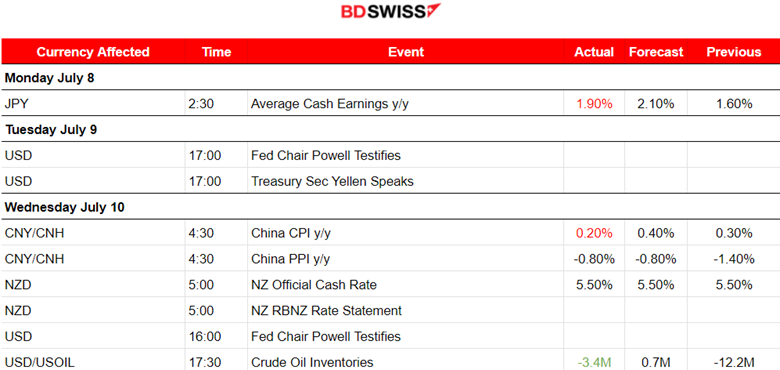
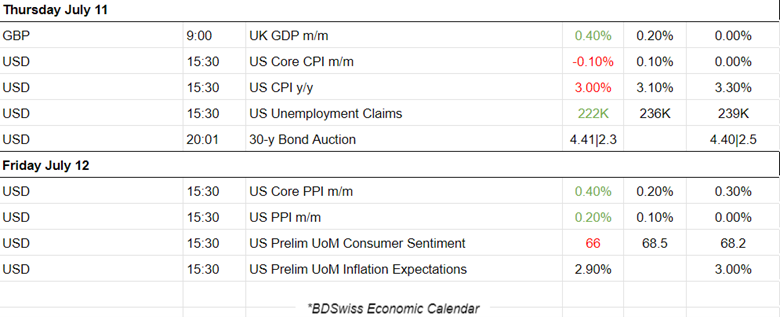 Currency Markets Impact:
Currency Markets Impact:
_____________________________________________________________________________________________
FOREX MARKETS MONITOR
Dollar Index (US_DX)
The index turned to the downside as economic indicators finally show that inflation is lowering for the U.S. On the 11th of July, the CPI inflation report surprised the markets with a weak figure. A shock took place causing massive USD depreciation against a basket of currencies, a 0.70 points drop before retracement took place. Market expectations were met in regard to lower prices and borrowing costs. Dollar weakening also took place even after the PPI inflation report on the 12th. Despite the higher-than-expected released figures, USD deprecation continued as market participants are convinced that interest rate cuts are going to take place soon.
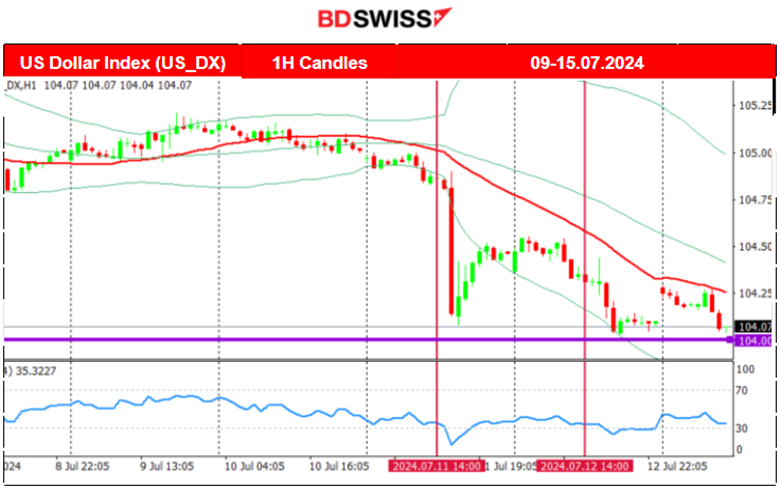 EURUSD
EURUSD
The EURUSD experienced an uptrend starting on the 10th of July. Obviously, the USD was driving the market. The USD deprecation was reinforced by the news. The CPI data report helped boost confidence that inflation is cooling after surging in the first quarter. EUR on the other hand is not greatly affected. The ECB had taken the decision to cut rates once so far and inflation was reported lower in the Eurozone.
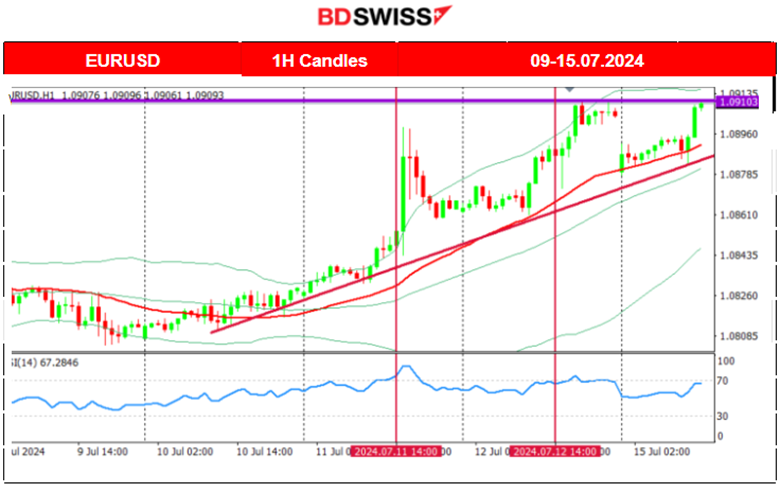 USDJPY
USDJPY
The USDJPY lowered this week as the USD experienced a strong weakening, mainly from the inflation report. However, at the same time, a great amount of JPY buying during the news releases caused the USDJPY to drop heavily. On the 11th, BOJ intervention caused a 400 pips drop in the pair before it eventually retraced. The next day, on the 12th, two more cases of sharp drops indicate intervention trying to strengthen the JPY. USDJPY just like the U.S. dollar index is facing a strong support area at 157.4.
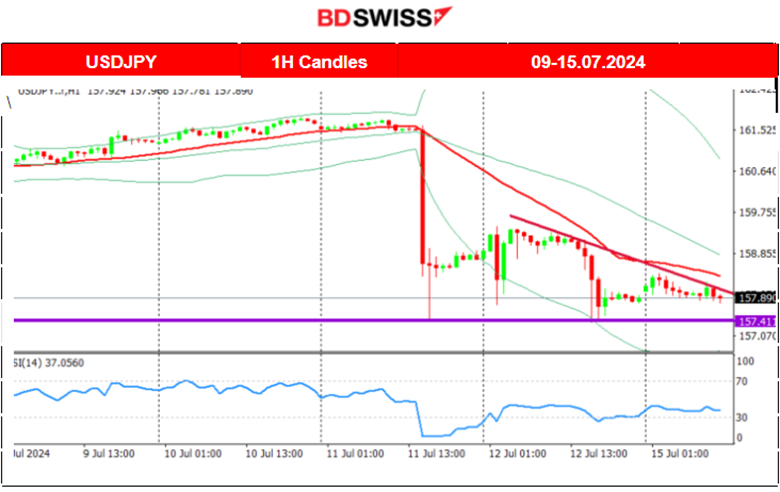 _____________________________________________________________________________________________
_____________________________________________________________________________________________
CRYPTO MARKETS MONITOR
BTCUSD
The latest price data formed a triangle indicating that volatility levels lowered and as mentioned in our previous analysis upon triangle breakout on the 10th, it led to a jump. The price remained higher, settling at 58K USD but eventually moved to the downside until the 12th. On that day the price reversed to the upside, crossing the 30-period MA on its way. It was the start of an uptrend that surprisingly led the price to continue steadily upward during the weekend. At the start of the week, on Monday 15th, the price jumped to nearly 63K USD. That is a remarkable recovery for Bitcoin’s price.
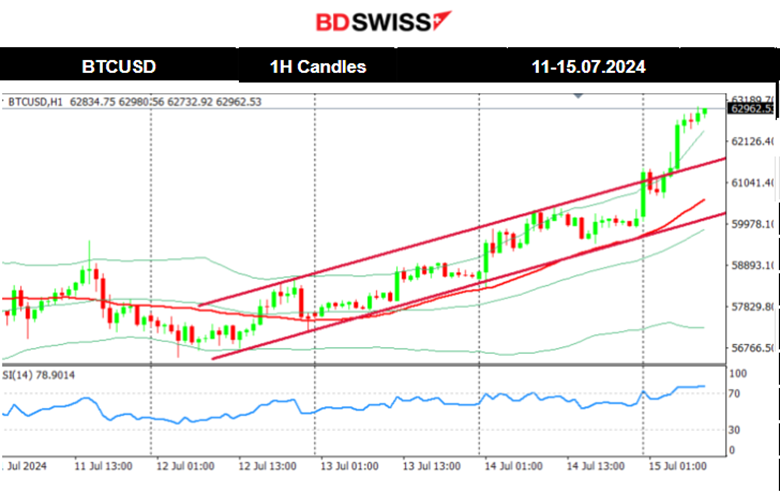 _____________________________________________________________________________________________
_____________________________________________________________________________________________
NEXT WEEK’S EVENTS (Week 15 – 19.07.2024)
Coming up:
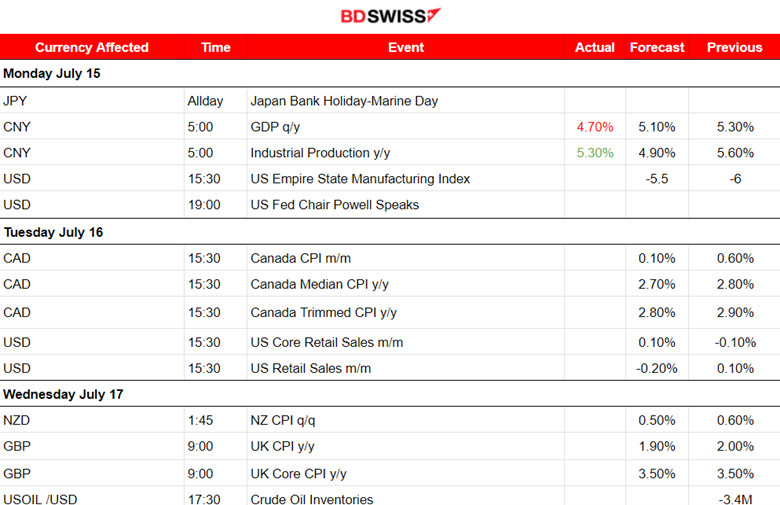
 Currency Markets Impact:
Currency Markets Impact:
_____________________________________________________________________________________________
COMMODITIES MARKETS MONITOR
U.S. Crude Oil
The price settled near the 80.5 USD/b level, below the MA, but on the 10th it eventually reversed to the upside. This movement was a correction/retracement to the 61.8 Fibo level as depicted on the chart. The price boost to the upside was a result of a reported decline, -3.4M barrels in Crude Oil Inventories in the U.S. against a forecast of 0.7M growth. During the U.S. inflation news yesterday on the 11th Crude oil prices saw some retreat but eventually reversed to the upside. After several tests of the resistance 82.10 USD/b, it finally broke that resistance. After finding strong resistance at near 82.5 USD/b the price reversed to the downside on the 12th breaking that triangle formation. It did not, however, reach the 80.2 USD/b support but it has the potential to do so as long as it moves away from the 81 USD/b level significantly towards the downside.
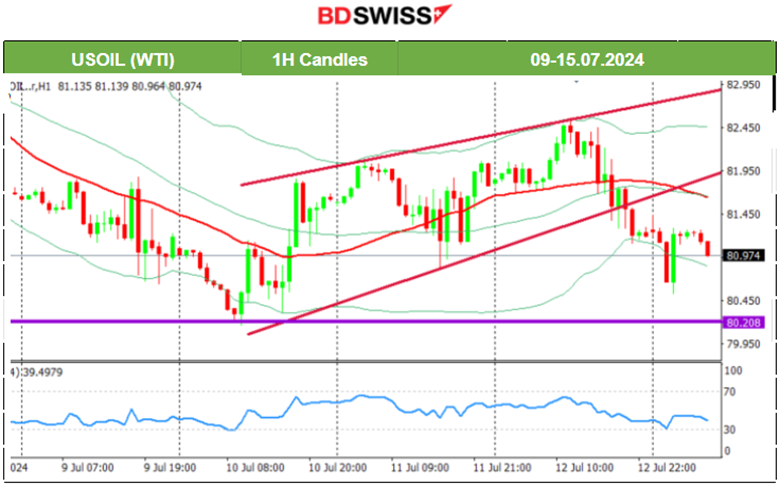 Gold (XAUUSD)
Gold (XAUUSD)
The price eventually moved to the upside on the 9th of July crossing the 30-period MA on its way up. The target level of 2,380 USD/oz was reached as per our forecast in the previous analysis and the price even moved higher reaching the resistance at 2,387 USD/oz before retracement took place. On the 11th, the USD weakening that took place during the U.S. inflation report release caused the price to jump, initially reaching near 2400 USD/oz. After testing that resistance intraday, another breakout led to the price reaching even the resistance near 2,423 USD/b before retracing to the MA. On the 12th the price continued with retracement after the previous day’s peak. When it touched the MA it reversed to the upside to continue with a sideways path. A triangle formation is now apparent and we wait for its breakout to take advantage of the rapid movement in one direction that will probably occur. 2,380 USD/oz is the target level for a downward breakout. To the upside target level would be 2,430 USD/oz.
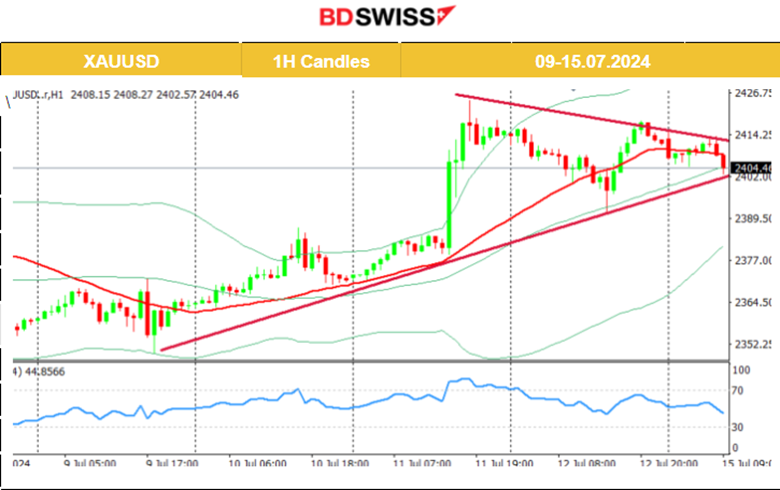 _____________________________________________________________________________________________
_____________________________________________________________________________________________
EQUITY MARKETS MONITOR
S&P500 (SPX500)
Price Movement
The CPI inflation y/y figure was reported on the 11th and the index dropped as per our forecast in the previous analysis. Expectations about lowered borrowing costs starting in September are boosting investment in stocks. After the shock on the 11th, the market experienced another shock on the 12th after the release of the PPI data, Consumer sentiment and inflation expectations. A jump occurred with the price finding resistance around 5,660 USD before retracing to the intraday mean. Huge volatility for the index last week as depicted on the chart.
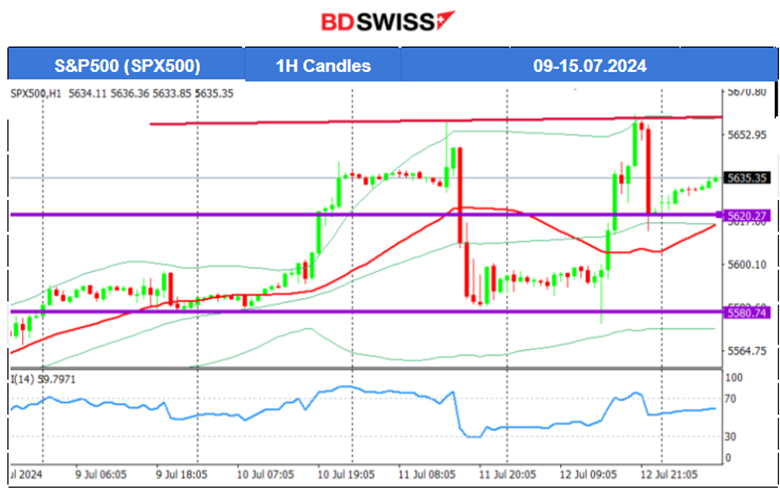
______________________________________________________________

